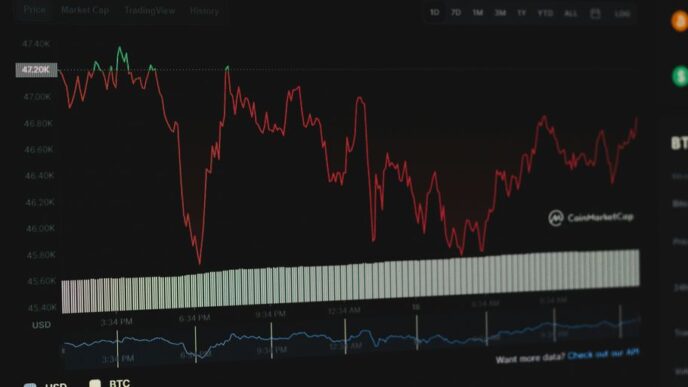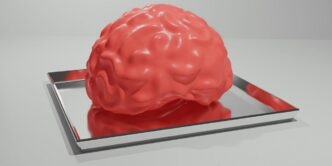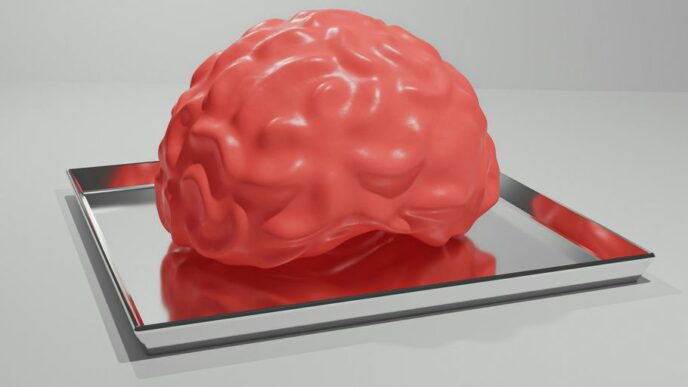
By Lance Eliot, the AI Trends Insider
The great outdoors. You might assume that there are remote forests that are still pristine and untouched by humanity. If you aren’t trained as a botanist or biologist or ecologist, you might not be aware that many of these seemingly unspoiled forested lands are actually quite marred by the hands of mankind.
In some areas, there is a concerted effort to reinstate the earlier status quo of those lands. This involves not only protecting what is there, but also includes doing a systematic restoration to the wilderness too.
There are specialists that refer to this as wildlife reengineering.
A wildlife engineer studies the existing state of the ecosystem and tries to devise a means to re-introduce wildlife into it. The goal is to do this in a fashion that the ecosystem ultimately becomes self-regulating and self-sustaining. Mankind tries to push it toward a true wildlife wilderness and then hopefully steps aside and doesn’t need to continually be in the middle of doing so (other than providing further protection from mankind itself).
There’s a term that has arisen for this process of re-instituting the wilds to a wilderness state, namely it is called rewilding.
Rewilding As A Controversial Matter
Keep in mind that not everyone believes in the notion of rewilding.
Some opponents say that mankind is part of nature and so it is already “natural” that the ecosystem has changed because of mankind’s presence.
Trying to somehow restore the wild to a pre-mankind arrival doesn’t make much sense to them. Even if you could do such a restoration, are you then going to ban humans from going into these restored wild areas? Denying human access seems like a rather nutty option, in their view.
Proponents toward rewilding tend to say that they are not trying to remove mankind from the equation, and only trying to undo the damages that mankind has wrought.
They say that we all now know more about what kind of adverse impacts the introduction of mankind can have. This will allow for the revived ecosystem to co-exist with mankind, in which mankind now takes better care as to how the interaction with the wilderness takes place. Few of the proponents say mankind should be banned and instead argue that there should instead be limits and regulations on what mankind can do in the wild, trying to in essence save mankind’s base instincts from itself.
You might have seen some of the wildlife overpass crossings that are put up over highways that run through a wilderness area.
This is an example, some say, of a rewilding tactic.
The wildlife overpass crossing is made to be as natural and nature-like as feasible, including having trees, plants, grass, and so on. Animals that might have otherwise tried to cross the actual highway, and be struck by human’s driving their cars, will hopefully tend to use the specially constructed overpass crossing instead.
Notice in this example that the highway was not removed from the wilderness, though of course some rewilders would want that aspect to occur. Instead a kind of “compromise” was found that aids the wildlife and still aids mankind. One could also say that the overpass saves human lives. It presumably is a win-win, allowing for some amount of rewilding and yet also retaining mankind’s interest in the wilderness area.
As in any endeavor, there are some proponents of rewilding that are at the extreme end and would say that the use of an overpass is not even considered a form of rewilding. To them, true rewilding would consist of routing that highway to avoid the wilderness entirely. One question that arises by those that are sympathetic to such notions and yet also have some qualms, involves the cost for doing such rewilding. A large-scale full-scale rewilding of an enormous wilderness is not going to be cheap. Where will the money come from to fund such an enterprise?
Proponents of rewilding would say that we all owe the wilderness for the prior transgressions of our ancestors. Like it or not, we need to now share the cost to put the wild back into the wilderness. And though I previously mentioned forests, the “wild” refers to any kind of biome or habitat, whether it is a forest, a desert, and so on. Some consider conservationists to be rewilders, while others suggest that you can be a conservationist and not necessarily be a rewilder — or at least have varying views on the topic of rewilding.
What does this have to do with AI self-driving driverless autonomous cars?
At the Cybernetic AI Self-Driving Car Institute, we are developing AI software for self-driving cars. Our view is that there are several eras underlying the evolution of AI self-driving cars, and one of those eras will involve the “rewilding” of AI self-driving cars.
Allow me to elaborate.
I’d like to first clarify and introduce the notion that there are varying levels of AI self-driving cars. The topmost level is considered Level 5. A Level 5 self-driving car is one that is being driven by the AI and there is no human driver involved. For the design of Level 5 self-driving cars, the automakers are even removing the gas pedal, brake pedal, and steering wheel, since those are contraptions used by human drivers. The Level 5 self-driving car is not being driven by a human and nor is there an expectation that a human driver will be present in the self-driving car. It’s all on the shoulders of the AI to drive the car.
For self-driving cars less than a Level 5 or Level 4, there must be a human driver present in the car. The human driver is currently considered the responsible party for the acts of the car. The AI and the human driver are co-sharing the driving task. In spite of this co-sharing, the human is supposed to remain fully immersed into the driving task and be ready at all times to perform the driving task. I’ve repeatedly warned about the dangers of this co-sharing arrangement and predicted it will produce many untoward results.
For my overall framework about AI self-driving cars, see my article: https://aitrends.com/selfdrivingcars/framework-ai-self-driving-driverless-cars-big-picture/
For the levels of self-driving cars, see my article: https://aitrends.com/selfdrivingcars/richter-scale-levels-self-driving-cars/
For why AI Level 5 self-driving cars are like a moonshot, see my article: https://aitrends.com/selfdrivingcars/self-driving-car-mother-ai-projects-moonshot/
For the dangers of co-sharing the driving task, see my article: https://aitrends.com/selfdrivingcars/human-back-up-drivers-for-ai-self-driving-cars/
Let’s focus herein on the true Level 5 self-driving car. Much of the comments apply to the less than Level 5 self-driving cars too, but the fully autonomous AI self-driving car will receive the most attention in this discussion.
Here’s the usual steps involved in the AI driving task:
- Sensor data collection and interpretation
- Sensor fusion
- Virtual world model updating
- AI action planning
- Car controls command issuance
Up until current times, most of the work on AI self-driving cars has been primarily research oriented, often done by university research labs and other government related entities. Some would say this was the “pre-historic” era of AI self-driving cars, though I think using such language as “pre-historic” is a disservice to those that have done incredible work to get us to where we are today.
Today’s era might be characterized as the Exploratory era.
As a result of a grand convergence of key factors, the advent of AI self-driving cars is beginning to emerge. It isn’t going to just suddenly up and appear. Instead, it will be years of trial efforts. I’ve mentioned many times that there will be hard times ahead for AI self-driving cars during this experimentation and exploratory period.
Will the public be willing to endure the hardships that will occur as AI self-driving cars get involved in untoward incidents on our roadways?
Will they tolerate such instances, or will it draw their ire and might there be a backlash that generates onerous regulations that dampen the efforts toward true Level 5 self-driving cars?
For my article about the grand convergence that has led us to this moment in time, see: https://aitrends.com/selfdrivingcars/grand-convergence-explains-rise-self-driving-cars/
See my article about the ethical dilemmas facing AI self-driving cars: https://aitrends.com/selfdrivingcars/ethically-ambiguous-self-driving-cars/
For potential regulations about AI self-driving cars, see my article: https://aitrends.com/selfdrivingcars/assessing-federal-regulations-self-driving-cars-house-bill-passed/
For my predictions about AI self-driving cars for the 2020s, 2030s, and 2040s, see my article: https://aitrends.com/selfdrivingcars/gen-z-and-the-fate-of-ai-self-driving-cars/
Next Comes The Taming Era
I’ve predicted previously that we’ll make it through the Exploratory Era, and we’ll then move into the Taming Era.
During the Taming era, there will be a socio-technical interplay of how the auto makers and tech firms devise and shape the AI of self-driving cars, along with the public and regulators, doing so to arrive at a “tamed” version of Level 4 and Level 5 self-driving cars.
Numerous hearings will take place.
Advocacy groups that are today rather subdued on the matter will come forth and be quite outspoken.
There will be sides taken as to pro-AI self-driving cars versus opposed to AI self-driving cars.
By this somewhat acrimonious process, there will be a kind of “taming” of AI self-driving cars.
By the word taming I’m referring to the kinds of driving capabilities that the AI self-driving cars will embody.
Right now, most of the automakers and tech firms are creating rather timid AI drivers. In some sense, you might liken this to a novice teenage driver. When a teenage driver first starts to drive a car, they usually tend to come to a stop at a stop sign and take a seemingly long time to look around before they proceed. They tend to drive at or below the speed limit. You’ve perhaps found yourself behind one of these novice drivers and gotten frustrated that they are driving with such a sluggish pace and in a rather timid manner.
For AI self-driving cars, given the rudimentary and rather crude capabilities of today’s versions, it certainly makes sense that the AI will be driving in a similar timid manner. The public is already on-edge about whether to trust AI self-driving cars. It won’t take too many incidents of an AI self-driving car that injures or kills someone, whether it be human occupants in the self-driving car or humans outside of the self-driving car, and the public support for AI self-driving cars will wane quickly.
For the public’s perception of AI self-driving cars, see my article: https://aitrends.com/selfdrivingcars/roller-coaster-public-perception-ai-self-driving-cars/
For the Uber self-driving car incident that killed a pedestrian, see my analysis: https://aitrends.com/selfdrivingcars/ntsb-releases-initial-report-on-fatal-uber-pedestrian-crash-dr-lance-eliot-seen-as-prescient/
For rear-end collisions and AI self-driving cars, see my analysis: https://aitrends.com/ai-insider/rear-end-collisions-and-ai-self-driving-cars-plus-apple-lexus-incident/
So, we’ll migrate from the Exploratory era to the Taming era, which will achieve finding a balance between having AI self-driving cars on our roadways and have them function in a manner that is more akin to a refined novice driver rather than a more seasoned sophisticated driver.
Some believe for example that an AI self-driving car should always drive in a purely legal manner. This idea that AI self-driving cars would need to strictly adhere to the legal requirements for driving a car will inhibit the kind of driving that we already accept by humans. In essence, if the AI is going to only be able to drive in a strictly legal fashion, you are by definition going to limit the savviness of the driving by the AI.
For the case of allowing AI to not be bound strictly, see my article: https://aitrends.com/selfdrivingcars/illegal-driving-self-driving-cars/
For the human foibles of driving, see my article: https://aitrends.com/selfdrivingcars/ten-human-driving-foibles-self-driving-car-deep-learning-counter-tactics/
For how AI developers are designing the AI, see my article: https://aitrends.com/selfdrivingcars/egocentric-design-and-ai-self-driving-cars/
For the nature of driving styles for AI self-driving cars, see my article: https://aitrends.com/selfdrivingcars/driving-styles-and-ai-self-driving-cars/
I’d anticipate that we’ll have reached a point that the public generally accepts the use of AI self-driving cars on our roadways.
People will find these tamed AI self-driving cars to be reasonably acceptable for use among the general public. It will be as though we’ve all agreed to let teenagers drive cars and even though we’ll realize they aren’t going to improve much over time, at least they are consistent in the tamed nature of how they are driving. Being a predictable driver is handy, even if the driver is timid and tentative as to how they drive.
When I mention that the AI self-driving car won’t improve much over time, I am not saying that this is due to the limits of the AI per se. Instead, I am suggesting that since the tamed or timid nature of the AI has been arrived at as a societal preference, the boundaries will be established not so much by what the AI can actually do, but more so by what society is willing to allow for the AI to do.
Don’t though overstate that aspect, since I am not saying that the AI will be able to drive miraculously, and it is somehow artificially being held back. There will be a crossover point of the further maturation of the AI and the limits imposed by society as part of the taming period.
Keep in mind too that there will be a mix of both human driven cars and AI self-driving cars during this period of time. I realize that there are pundits that say we will only have AI self-driving cars, but this belies the aspect that today we have about 200+ million cars in the United States, and there is nothing that will somehow overnight change those into AI self-driving cars.
For many years, there will be a mix of human driven cars and AI self-driving cars. I point this out because the Utopians envision a world in which cars are all communicating and coordinating with each other, and there is zero chance of fatalities due to automobile incidents. It really doesn’t make much sense to be discussing this all-and-only AI self-driving cars world since it is a far distant future, and instead be more practical and face the reality of a world composed of both human driven cars and AI self-driving cars.
What kind of driving won’t the tamed AI do?
Imagine you are on the freeway. If you are a human driver, and you are heading to work for the day, you might be willing to weave in-and-out of the traffic, trying to make headway in an otherwise somewhat crowded freeway.
The AI of the self-driving cars for the Tamed Era will instead tend to stay in their lane, and only make a lane change when actually required. Thus, the AI made a lane change to get onto the freeway, and maybe made another lane change to the fast lane since the distance to work is far enough to warrant getting into the fast lane. Once the exit nears, the AI instructs the self-driving car to move over lanes to make the exit.
For the limited self-driving car maneuverability of today’s AI, see my article: https://aitrends.com/selfdrivingcars/maneuverability-ai-self-driving-cars/
For understanding that humans drive and make use of greed, see my article: https://aitrends.com/selfdrivingcars/selfishness-self-driving-cars-ai-greed-good/
For defensive driving tactics and AI self-driving cars, see my article: https://aitrends.com/selfdrivingcars/art-defensive-driving-key-self-driving-car-success/
In that sense, the AI is being “held back” from driving in a manner that a human would drive.
Presumably, if the AI is as good as a human driver, it should be able to weave in-and-out of the traffic, just as a human would. I realize there are risks associated with this kind of driving tactic, and I’m not suggesting that the weaving approach is necessarily good, but on the other hand it does have some advantages and provides a driving technique that when used sensibly can be helpful.
With today’s AI, it would be prudent to not trust a self-driving car to do this kind of weaving tactic. The AI is just not good enough as yet. It would be similar to telling a teenage novice driver to weave through traffic on the freeway. I think we would all shudder at the prospects of such an act. The odds are that the weaving would as a minimum disturb the rest of the traffic, and more than likely lead to a car incident of one kind or another.
Eventually, the AI is going to be good enough to do this kind of weaving.
But, we as a society will not be ready for it and will instead need to undergo the Taming Era to have sufficient belief and faith that AI self-driving cars can at least handle the rudiments of driving on our roadways.
It is at this juncture that the third era will arise, the Rewilding Era.
The Final Era: Rewilding
I’ve opted to call this third and final era the “rewilding” period because in some sense we are going to be returning AI self-driving cars back to what was originally envisioned.
It was envisioned that AI self-driving cars would drive as proficiently as humans.
This includes the various day-to-day tricks that we humans use.
It includes the borderline legal maneuvers that humans use when driving.
It involves perhaps some degree of illegal driving that humans use today.
And so on.
For my article about the notion of starting over on AI for self-driving cars, see: https://aitrends.com/selfdrivingcars/starting-over-on-ai-and-self-driving-cars/
For the cognition timing aspects of the driving task, see my article: https://aitrends.com/selfdrivingcars/cognitive-timing-for-ai-self-driving-cars/
For the responsible parties involved in the AI self-driving car realm, see my article: https://aitrends.com/selfdrivingcars/responsibility-and-ai-self-driving-cars/
We’ll shift from the tamed AI self-driving car to the rewilded AI self-driving car.
I’m not going to say that the AI self-driving cars will be “wild” per se, and indeed I don’t think we would want them to be driving in a crazy or foolish or senseless way. Instead, I’m suggesting that we’ll take off the earlier imposed limits and allow the AI to flourish and drive the self-driving car in a manner more consistent with the “wild” way in which humans drive a car.
In a manner of speaking, you might say that we’ll be putting a tiger-in-the-tank of AI self-driving cars.
For those of you that don’t recall, one of history’s most well-known advertising campaigns occurred during the 1960’s and involved a slogan that you should put a tiger in your tank. It became a quite popular saying and did well for the Esso gasoline provider.
Eventually, the phrase itself became commonplace as an expression of getting energized.
Conclusion
Here then are the three eras of AI self-driving cars:
1) Exploratory Era (today)
2) Taming Era (coming up)
3) Rewilding Era (post-Taming)
We will progress from today’s Exploratory Era into the Taming Era.
This will allow us as a society to generally become accepting of AI self-driving cars. Once that has occurred, there will be an impetus to shift toward the third era, the Rewilding Era. At that juncture, the AI will be sophisticated enough that it will be time to take-off the training wheels, so to speak, and let it roll.
I’d say it is premature right now to be telling people that someday we’ll be putting a tiger in their tank and making AI self-driving cars become aggressive human-like drivers.
Unless you’ve first lived in the Taming Era, there is little chance you can readily perceive that there’s a further future ahead for AI self-driving cars that involves such driving tactics.
We’ll need to ease our way into it.
That’s fine, though, and provides breathing room for the AI to get better suited for driving, and become in some sense just like those maniac human “driving tigers” that we all are.
Copyright 2020 Dr. Lance Eliot
This content is originally posted on AI Trends.
[Ed. Note: For reader’s interested in Dr. Eliot’s ongoing business analyses about the advent of self-driving cars, see his online Forbes column: https://forbes.com/sites/lanceeliot/]












